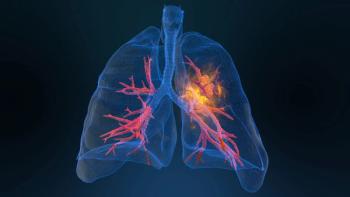
Kidney Cancer Research Consortium Efforts May Improve Treatment Outcomes

Leveraging novel agents, innovative clinical trial designs, and correlative studies may improve the treatment of patients with kidney cancer.
In a collaboration with KidneyCAN, CancerNetwork® spoke with Eric Jonasch, MD, about the Kidney Cancer Research Consortium’s overarching goal to advance the treatment of patients with kidney cancer through a collaborative effort to refine the field’s therapeutic strategies to improve outcomes.
Jonasch, a professor in the Department of Genitourinary Medical Oncology of the Division of Cancer Medicine, and the director of the von Hippel Lindau Center at The University of Texas MD Anderson Cancer Center, highlighted key principles driving the consortium’s mission of improving treatment outcomes in this patient population. Specifically, he described how novel treatment agents, innovative clinical trial designs, correlative studies incorporating biopsies and circulating biomarker analyses, and new technologies may help with targeting tumors more optimally.
KidneyCAN is a nonprofit organization with a mission to accelerate cures for kidney cancer through education, advocacy, and research funding. Learn more about KidneyCAN’s mission and work
Transcript:
The question is: what are the missions and goals of the Kidney Cancer Research Consortium? What is my role? I’m the principal investigator of this effort, and it’s a Department of Defense [DoD]–funded grant whose mission is to improve the treatment of patients with renal cell carcinoma. We’re achieving this by developing a network of clinical trial centers across the country who have expertise, both from the development as well as from the execution perspective. We want to do the clinical trials that industry wouldn’t do otherwise and do the trials that are going to allow us to gain knowledge faster than other trials.
We do this by, number one, using novel agents. Number two [is] using more efficient and innovative clinical trial designs. Number three [is] incorporating correlative studies, including biopsies and other various circulating biomarker analyses, that allow us to get smarter faster when we perform these studies. Lastly, with the tissue that we acquire from these patients, we have some cutting-edge technologies that allow us to look at the tumor in ways that we’ve never been able to look at before. That allows us to see what the cancer cells are doing relative to the immune cells; are the tumor cells happy or unhappy with regards to the treatments we’re providing? How are the immune cells doing? This just gets us closer to being able to come up with more refined ways of improving our treatments.
Newsletter
Stay up to date on recent advances in the multidisciplinary approach to cancer.


















































































